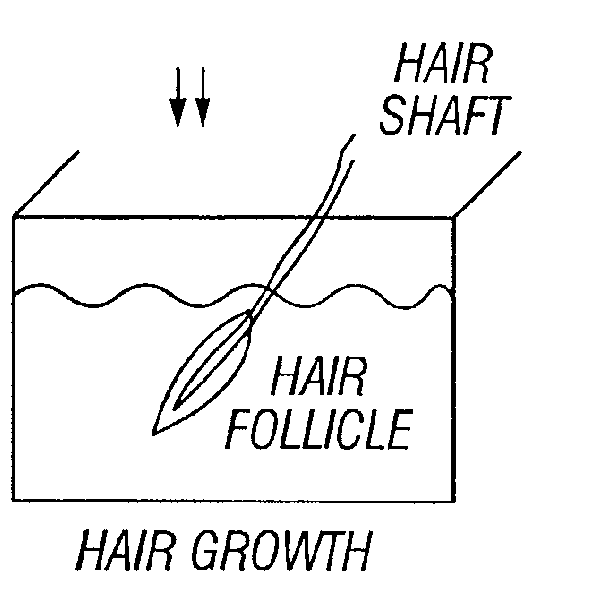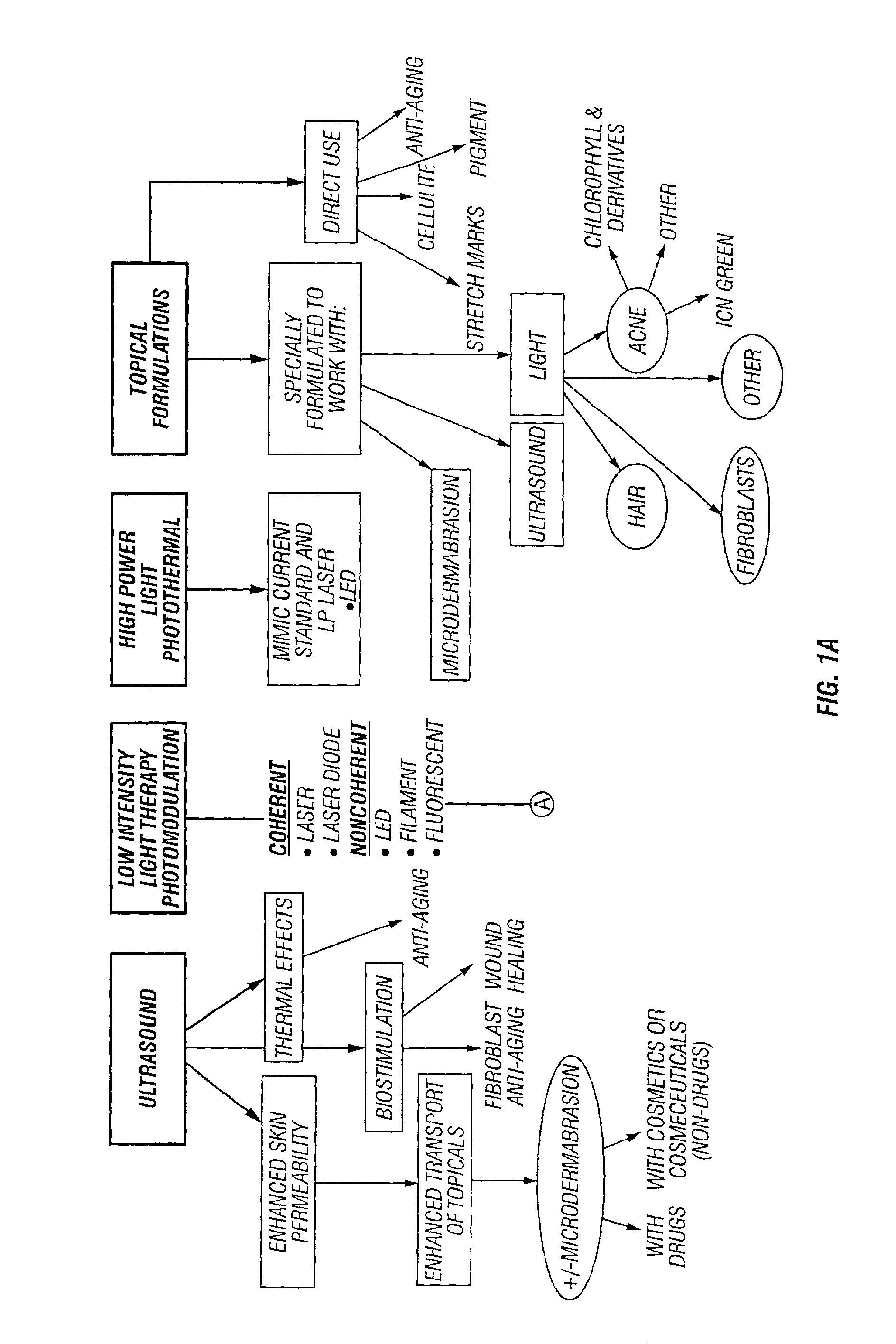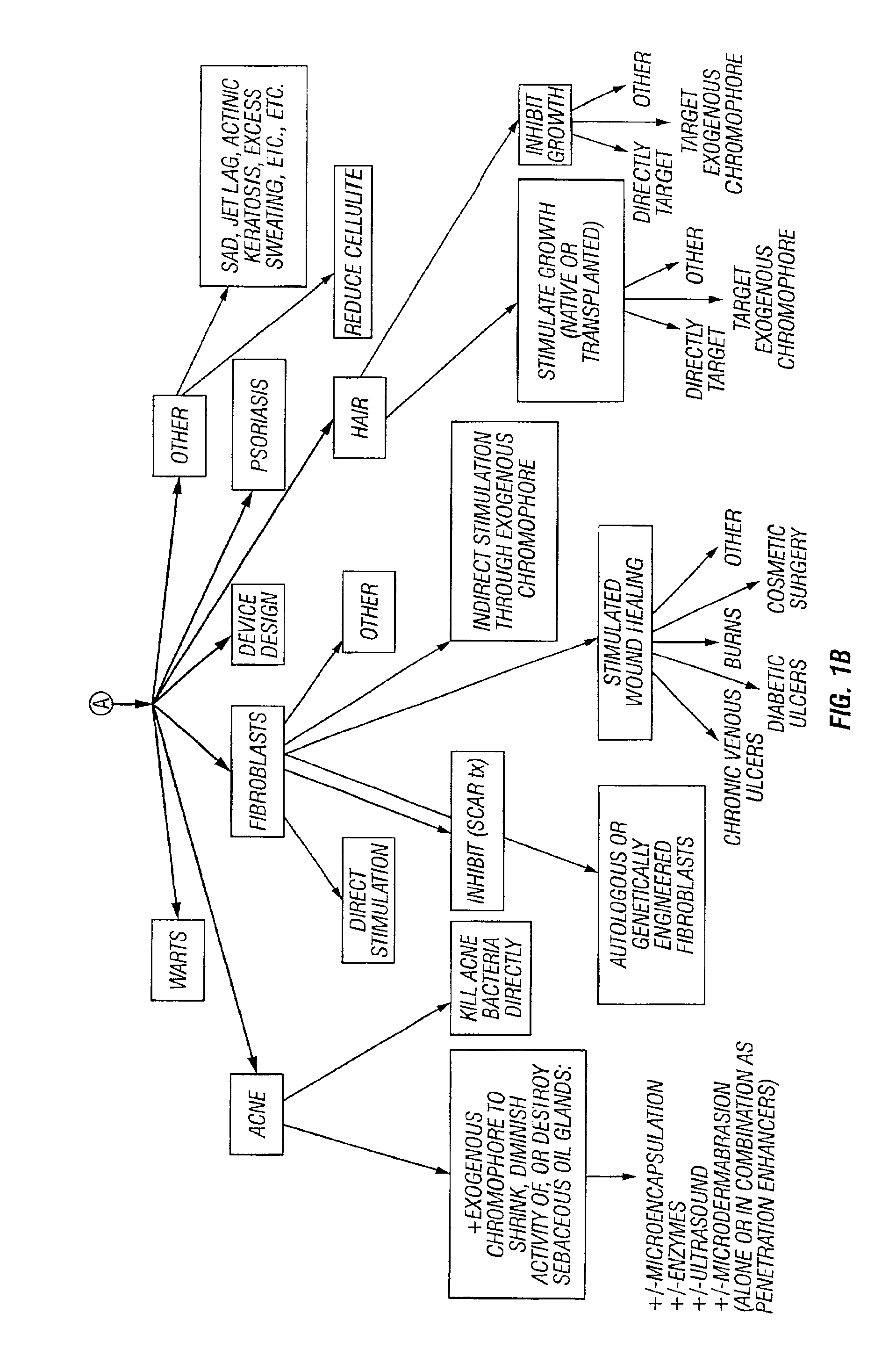Method and apparatus for the stimulation of hair growth
a hair growth and hair technology, applied in the field of hair growth stimulation system and method, can solve the problems of only partial permanent hair reduction, damage to surrounding tissues, and process tend to damage the hair,
- Summary
- Abstract
- Description
- Claims
- Application Information
AI Technical Summary
Problems solved by technology
Method used
Image
Examples
example 1
Hair Growth Stimulation
[0149]Three patients with male pattern baldness are tested for stimulation of hair growth before and after receiving treatment in accordance with the non-ablative method of the present invention. Hair counts are taken from their scalp by utilizing subjective evaluations conducted by trained medical personnel. The LED treatment includes subjecting the target area of the patient's skin to a LED light having a pulse width of 250 msec and a pulse spacing of 250 msec for 90 pulses. Eight treatments over 12 weeks to the entire face with 590 nm multichromatic LED at an intensity ranging from 1.05-2.05 μWatts. Having a bandwidth of + / −5-15 nm, the LED therefore produces light in the wavelength range of from 575 nm to 605 nm. Further, the treatment maintains a skin temperature below the threshold of thermal injury. The average improvement in hair counts is shown in Table 1.
[0150]
TABLE 1Hair CountPre treatmentsPost treatmentsPercent0%65%Improvement
example 2
Hair Growth Stimulation—Pulsed Treatment
[0151]A team of blinded expert graders viewing before and after photos of patients subjected to the non-ablative LILT (“Low Intensity Light Therapy”) of the present invention score the global improvement of hair thickness. Hair counting is also performed.
[0152]Six men with male pattern baldness were tested for hair growth stimulation and thickening of hair appearance. The LED treatment includes subjecting the target area of the patient's skin to a LED light having a pulse width of 10 msec and a pulse spacing of 100 msec for a period of 100 pulses. Eight treatments over 12 weeks to the entire face with 590 nm multichromatic LED at an intensity ranging from 1.0-2.0 μWatts. Having a bandwidth of + / −5-15 nm, the LED therefore produces light in the wavelength range of from 575 nm to 605 nm. Further, the treatment maintains a skin temperature below the threshold of thermal injury. The average increase in the appearance of hair density is shown in Ta...
example 3
Hair Growth Stimulation—Continuous Wave Treatment
[0154]One female with frontal hair loss is tested for hair growth stimulation in accordance with the procedures described in Example 2. Measurements by expert graders are taken from her scalp before and after treatment with a single continuous wave pulse for a total of 200 seconds from a 590 nm multichromatic LED at an intensity of 1.05-2.05 μWatts. Eight treatments spaced evenly over 12 weeks are administered to the patient's frontal scalp and forehead.
[0155]
TABLE 3Averaged Value ofWeek / ValueReduction 0 weeks 0% 4 weeks12% 8 weeks28%12 weeks43%
PUM
 Login to View More
Login to View More Abstract
Description
Claims
Application Information
 Login to View More
Login to View More - R&D
- Intellectual Property
- Life Sciences
- Materials
- Tech Scout
- Unparalleled Data Quality
- Higher Quality Content
- 60% Fewer Hallucinations
Browse by: Latest US Patents, China's latest patents, Technical Efficacy Thesaurus, Application Domain, Technology Topic, Popular Technical Reports.
© 2025 PatSnap. All rights reserved.Legal|Privacy policy|Modern Slavery Act Transparency Statement|Sitemap|About US| Contact US: help@patsnap.com



